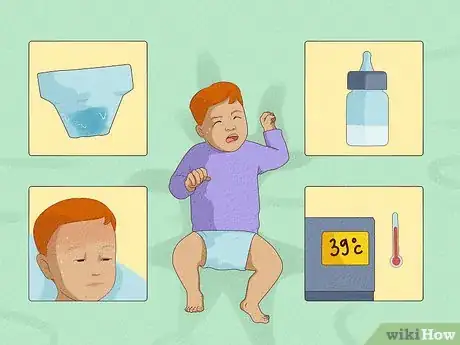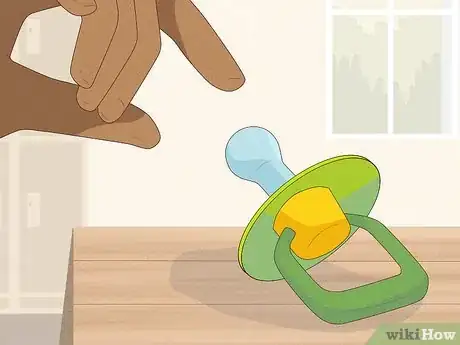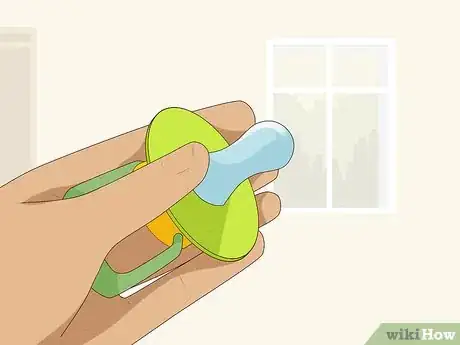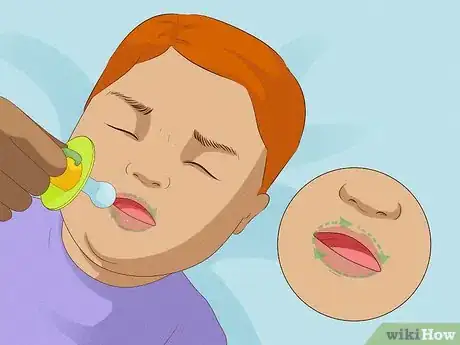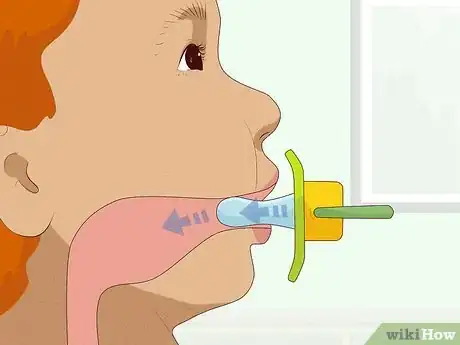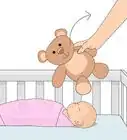This article was co-authored by Denise Stern. Denise Stern is a Parenting Specialist and the CEO of Let Mommy Sleep, the country’s leading Baby Nurse and Postpartum Care service. Denise specializes in providing nurturing care to newborns and evidence-based education to their parents. She holds a BA in Public Relations from North Carolina State University. Denise was the US Chamber of Commerce Leading Woman-Owned Business in 2013, a Washington FAMILY Magazine Mother of the Year in 2016, and on the elite White House Summit for Working Families hosted by the President and First Lady Obama in 2014. Let Mommy Sleep is the only company of its kind that holds a local government contract to teach newborn and postpartum care.
This article has been viewed 28,515 times.
Although it's a mother's instinct to know how to use a pacifier, new mothers may need a fresh helping hand when it comes to letting them know of the process. When this mother needs this type of help, this article can be there.
Steps
-
1Understand why your baby might be crying and fix the items that may be quickly taken care of (besides using the pacifier). Make a mental checklist in your mind of reasons why your baby might be crying that using a pacifier won't help fix.
- The reasons are pretty endless. Perhaps it's the baby who feels it's time for a new diaper and doesn't want to feel that way, or perhaps it's hungry and it's coming due-time for a fresh baby bottle of formula, the baby could be sick or the room is not right temperature-wise.
- Realize that these aren't the only reasons, but are two of the more common ones.
-
2Find the pacifier. Although your system is different than anyone else's system, some of the more common places the pacifier could be kept could include on a shelf on the changing table underneath the changing station, on top of a dresser, or even in a cup-holder to the nearest baby stroller. The possibilities are endless and you know your house and organization style best.Advertisement
-
3Grab the pacifier by the holder mechanism and hold it there until you've matched yourself up with the baby.
-
4Grab the knob to the pacifier's face mask, where the holder mechanism and mask meet.
-
5Rub the pacifier gently along the child's lips. They will eventually open their mouth just a little bit, enough for you to insert the pacifier into their mouth.
- If they are wailing at the top of their lungs, you may skip this step - nothing will help them clench down to start using the pacifier until something else is solved.
-
6Push the pacifier into the child's mouth until the pacifier's face shield meets their face.
-
7Wait for the baby to accept the pacifier. Some babies are natural acceptors (accepting anything that's given to them) to soothe them into a calmer state. Other babies aren't, and will immediately push the pacifier back out - rejecting it.
- The baby may reject the pacifier, if theirs another reason for their crying such as their diaper needs to be changed, or that they want food/formula/milk/etc. or for some other reason, that may be more urgent. Prepare a mental list of things the baby may need for you to complete and try giving the pacifier again.
- Hold your baby upright for at least 20 minutes after they eat to ensure they digest properly.
- Replace your pacifier every 2-3 months as your child wears out the old one and they develop new needs.
Community Q&A
-
QuestionHow do I open a pacifier to put honey or something else in it?With most pacifiers you don't open it; instead, you put the substance (like honey) on the sucking part of it.
-
QuestionWhat can I put in my 5 months old baby's pacifier?
 ZackTop AnswererNever put anything in a pacifier. This could weaken the pacifier and endanger the baby.
ZackTop AnswererNever put anything in a pacifier. This could weaken the pacifier and endanger the baby.
